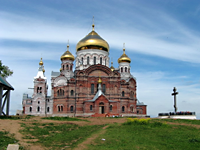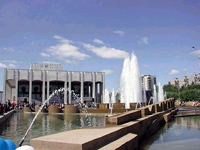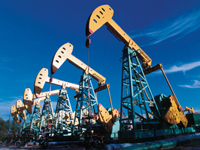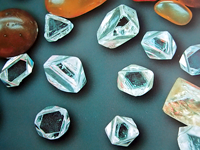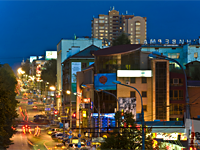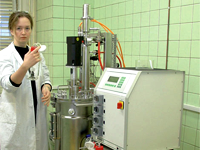 |
Home page / Regions
/ The Privolzhsky Federal District
/ The Perm Krai
/ Social and natural resources
|
|
|
Social and natural resourcesHistory and cultureThe development of the Perm area has begun as long ago as the Middle Ages. The first Russian settlements appeared in the Krai in XV century. Fortified towns and saltworks were established here. The region became the Russian stronghold for further expansion into the Urals and Siberia. The Yegoshikhinsky Copper Smelting Plant established in XVIII century was amongst the first large metallurgical plants built in the Urals. In XIX century the Perm province - which then included some territories of the neighbouring Oblasts of today - became the principal mining and metallurgical region of Russia. 110 metallurgical plants specialising in iron and steel production were built. In the middle of XIX century the Perm province becomes the principal supplier of copper, platinum, and gold. This period is marked with large investments of foreign capital into the Krai's economy.
XX century saw the development of the machine building industry in Prikamye (lands near the river Kama); there appeared some new industries - nonferrous metallurgy, chemicals, and oil refining. Most of these industries are still playing the key role in the Krai's economy today. The cultural importance of the region is growing too. There are more than 900 libraries, more than 50 museums, 11 theatres, and more than 200 cinemas in the Krai today. The best known museum of the region is the Perm Art Gallery where we find the world-famous Perm wooden sculpture collection, masterpieces of Russian icon school (the Stroganov icons collection), and unique artworks of prominent Russian painters of XIX century.
Natural resources The following mineral resources are extracted on the territory of the Perm Krai:
Currently there are more than 160 prospected fields of hydrocarbon materials on the territory of the Krai, out of which 89 oilfields, 3 gas fields, and 18 oil and gas fields are being developed.
The unique Verkhnekamskoye potassium salts field, one of the world's biggest, is on the territory of the Perm Krai. More than a half of the Russian rock salt reserves are also concentrated here. Amongst the ore mineral resources we should note large quantities of chromite in the Main Saranovsk deposit which is the only chromite deposit exploited in Russia currently. Iron and copper ores are also extracted here.
Limestone, dolomite, plaster-stone, loam, anhydrite, quartz sand, gravel are produced for the needs of industry and construction. Other minerals have also been discovered on the territory of the Krai; these are quartz, citrine, selenite, marble, and uvarovite. The Perm Krai has vast forestry resources. Forests cover the area of 12 million hectares. The quantity of commercial timber available is almost 400 million cubic metres. Almost 70% of this timber is wood of most valuable coniferous species. In terms of the wealth of water resources the Perm Krai takes the leading position in the Urals. The two largest reservoirs - Kamskoye and Votkinskoye (covering the total area of three thousand square kilometres) - are the combined purpose reservoirs used for hydro power generation, navigation, extraction of sand and gravel, and fishing.
Population and labour resources 75% of all people live in cities, towns, and urban type communities. The population of Perm exceeds one million people; other large cities of the Krai are Berezniki and Solikamsk. Available labour resources of the Perm Krai amount to 1.75 million people.
Science In the Perm Krai there are 3 branches and 4 institutes of the Ural Branch of the Russian Academy of Sciences, 14 higher education establishments, about 35 industrial research institutes and design bureaus. Only the state owned science facilities employ 10 thousand research staff. The research organisations work in the following spheres in the Krai:
|
|
| Regions | Project participants | Investment projects | Consulates and Trade Offices | News and Analysis | About the Project |
|
© RusBusinessNews, 2009. All rights reserved. Establishing a hyperlink to RIA RusBusinessNews is required for using any of the material published on this website. News and analytical reviews are translated into foreign languages by the TRANSLIT Translation Agency |
«Sum of technologies»® Web design Site promotion |
